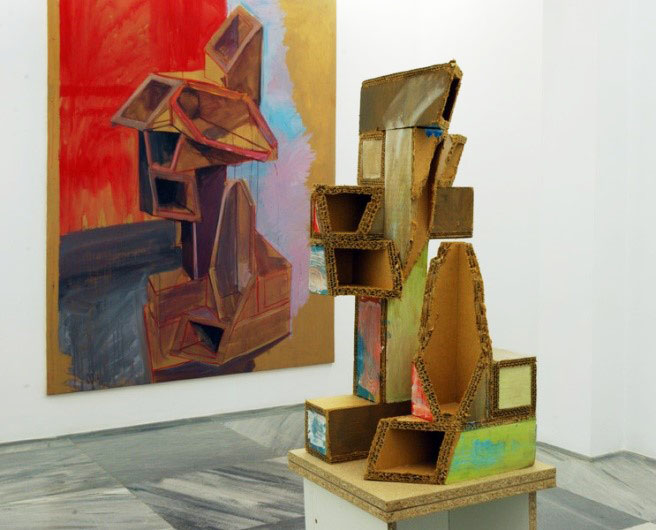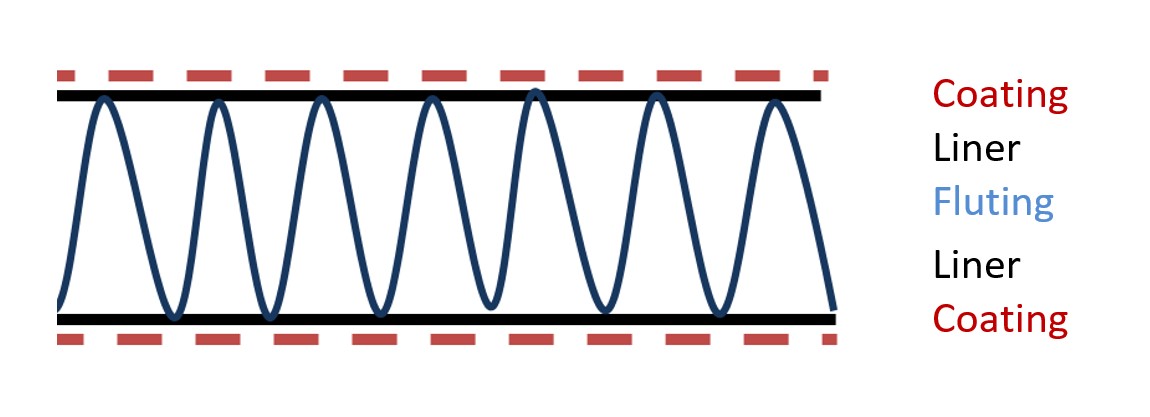Very often, when we think about contemporary art, the first thing that comes to mind is Rothko’s painting, Picasso’s Gernika or Ai Weiwei’s installations. But, what about all those corrugated cardboard artworks and objects that end up in fine art and ethnographic museums?

Undoubtedly, it is a fact that contemporary art is occupying more space in museums, leading to the creation of new institutions. Also, the internationalisation of museums like the Guggenheim and Thyssen is making contemporary art even more popular and as such, the research by conservators on new artistic materials is vital.
As context, the cardboard box was first produced in England in 1817 followed by a patent for corrugated paper in 1856. Soon after in 1874, Oliver Long glued a corrugated paper line to a smooth paper, creating the first corrugated cardboard.
Since then, some of the most well-known artists have used corrugated cardboard: Robert Rauschenberg, Michellangelo Pistoleto, Chris Gilmour, Claes Oldenburg, Naum Gabo, and Richard Tuttle among others. In fact, during my time at the Fine Arts Museum of Bilbao, I had the chance to work on the painting entitled La Liseuse by Toulouse-Lautrec, where the artist chose corrugated cardboard as support. Curiously, this ‘poor’ material has been used in paintings, sculptures, installations, advertising products and political props, which end up as museum objects.
What is clear is that the use of corrugated cardboard has continued to increase, probably because the concept of beauty, rich materials and long-term stability has changed. Its popularity may also result from the low cost of these materials. They can even be free, if the artists reuse them or pick up them from the trash. These qualities of cardboard, its familiarity, range of types, sizes, finishes, malleability, accessibility, weight and price make cardboard a star product.
However, these perfect qualities for the artist complicate things for the conservator. Raw materials used in manufacture are acidic and often are treated without success. Another big problem during manufacture is additives, adhesives, high temperatures and the process of shredding the fibres which weakens and shortens them.

The deterioration process can be divided in two groups (external and internal causes) that are interrelated: a relative humidity over 65% causes deformation of the structure and detachment of the liners from the fluting. The high lignin content, sensitive to ultraviolet light; photo-oxidises three times faster than a Kraft chlorine-free pulp paper and, chlorine-bleached pulps suffer early yellowing caused by hydrolytic attack.
Finally, the limitations of conserving three-dimensional corrugated cardboard objects should be acknowledged as the material itself is self-deteriorating. And light and moisture impact should be minimised as much as possible to prevent interventive conservation treatments in the future and the devaluation of the object.